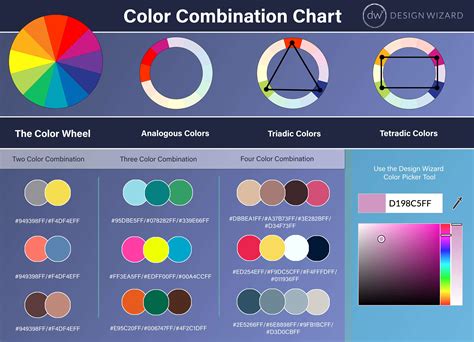Introduction
When it comes to transforming your look, finding the perfect hair color that complements your skin tone is crucial. Whether you’re embracing a bold new shade or subtly enhancing your natural color, a color match is essential for achieving a harmonious and flattering result.

Skin Tone Analysis: Unveiling Your Undertone
- Understand Undertones:
Identify your skin’s undertone – warm, cool, or neutral – to determine which hair colors will flatter you. Warm undertones have a yellowish or golden hue, cool undertones have a pinkish or bluish hue, while neutral undertones exude a mix of both.
- The Wrist Test:
Hold a white piece of paper under your wrist in natural light. If your veins appear blue or purple, you likely have cool undertones. If they appear green or olive, you have warm undertones. Neutral undertones will show a mix of both.
Color Wheel Mastery: Guiding Your Choice
- Complementary Colors:
Hair colors that are opposite on the color wheel create a striking contrast. For example, blue and orange, red and green, or purple and yellow complement each other, enhancing each other’s vibrancy.
- Adjacent Colors:
Colors that are adjacent to each other on the color wheel will create a more harmonious and natural look. For instance, blue-green and green, or purple-red and red complement each other seamlessly.
Hair Color Match Secrets: Unveiled
- Warm Undertones:
Golden, auburn, caramel, and honey blonde shades enhance warm undertones, creating a warm and inviting aura.
- Cool Undertones:
Blue-black, burgundy, violet, and ash blonde shades complement cool undertones, resulting in a sophisticated and cool-toned look.
- Neutral Undertones:
Neutral undertones have the flexibility to pull off both warm and cool hair colors. Ash brown, golden chestnut, and beige blonde are versatile choices.
Hair Color Match Tools: Simplifying Your Journey
- Online Color Matching Apps:
Numerous apps allow you to upload a photo and experiment with different hair colors to find the best match for your skin tone.
- Professional Consultations:
Visit a hair stylist for an expert color consultation. They will analyze your skin tone, understand your desired result, and provide tailored color recommendations.
Challenges in Hair Color Matching
- Maintenance:
Finding a hair color match is only half the battle. Maintaining the desired color requires regular touch-ups, which can be time-consuming and expensive.
- Damage:
Chemical hair color processes can cause hair damage, especially if done frequently. Bleaching, in particular, can weaken hair structure and make it more prone to breakage.
- Unrealistic Expectations:
Not all hair colors are achievable on all hair types. Factors like natural hair color, hair texture, and previous chemical treatments can influence the final result.
Strategies for Perfect Hair Color Matches
- Consider Your Lifestyle:
Factors like your profession, hair care routine, and lifestyle should influence your hair color choice. If you prefer low-maintenance, natural-looking hair, opt for colors close to your natural shade.
- Experiment Gradually:
Instead of going from blonde to black in one appointment, try a gradual approach. Start with a lighter shade, and gradually deepen the color over several appointments.
- Protect Your Hair:
To minimize hair damage, use color-safe shampoos and conditioners, and avoid excessive heat styling. Regular deep conditioning treatments can also help replenish hair’s moisture and strength.
Tips and Tricks for Hair Color Match Success
- Consider Your Eye Color:
Your eye color can also guide your hair color choice. Blue eyes often look stunning with warm blonde or reddish hues, while brown eyes can be enhanced by both warm and cool tones.
- Analyze Your Complexion:
The lightness and darkness of your complexion can also influence the color match. Fairer skin tones may suit lighter hair colors, while darker skin tones can pull off deeper shades.
- Don’t Forget Your Personal Style:
Ultimately, your hair color should reflect your personal style and taste. If you prefer edgy and bold looks, vibrant or pastel colors may suit you. If you lean towards a classic and sophisticated aesthetic, natural-looking shades may be a better choice.
- Research and Inspiration:
Use social media, magazines, and online resources to find hair color inspiration that resonates with you. Note down the specific hair colors you like, and bring them to your stylist for reference.
Tables for Enhanced Understanding
Table 1: Undertones and Hair Color Matches
| Undertones | Warm | Cool | Neutral |
|---|---|---|---|
| Skin Hue | Yellowish, Golden | Pinkish, Bluish | Mix of Both |
| Hair Color Matches | Golden Blonde, Auburn, Honey | Burgundy, Violet, Blue-Black | Ash Blonde, Chestnut, Beige |
Table 2: Color Wheel Complementary Pairs
| Color Pair | Description |
|---|---|
| Blue and Orange | Contrasting and Vibrant |
| Red and Green | Natural and Harmonious |
| Purple and Yellow | Bold and Eye-Catching |
Table 3: Maintenance Tips for Hair Color Matches
| Tip | Purpose |
|---|---|
| Color-Safe Shampoo and Conditioner | Prevents color fading |
| Regular Touch-Ups | Maintains desired color |
| Deep Conditioning Treatments | Replenishes hair moisture |
| Heat Protection Products | Minimizes damage from heat styling |
Table 4: Influence of Lifestyle on Hair Color Match
| Lifestyle Factor | Considerations |
|---|---|
| Profession | Choose colors suitable for workplace environment |
| Hair Care Routine | Opt for colors compatible with your hair care habits |
| Desired Level of Maintenance | Consider colors that suit your time and effort |
Conclusion
Finding the perfect hair color match is an art and a science. By understanding your skin tone, analyzing the color wheel, and considering your personal style, you can unlock a world of possibilities that will enhance your beauty and self-confidence. With the strategies and tips outlined here, you’ll be well-equipped to achieve a hair color that complements your natural features, reflects your individuality, and empowers you to embrace your true style.
